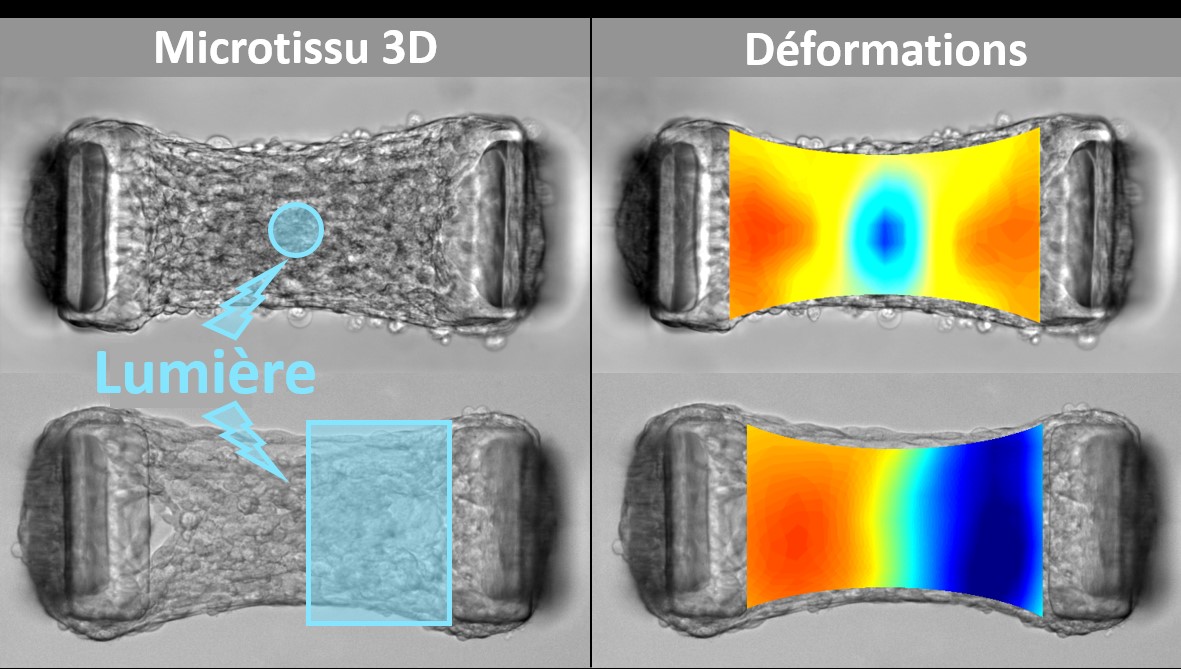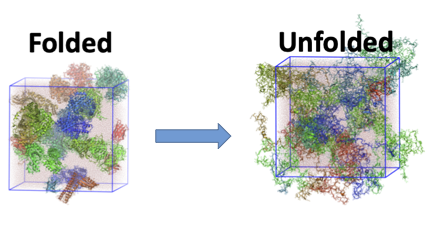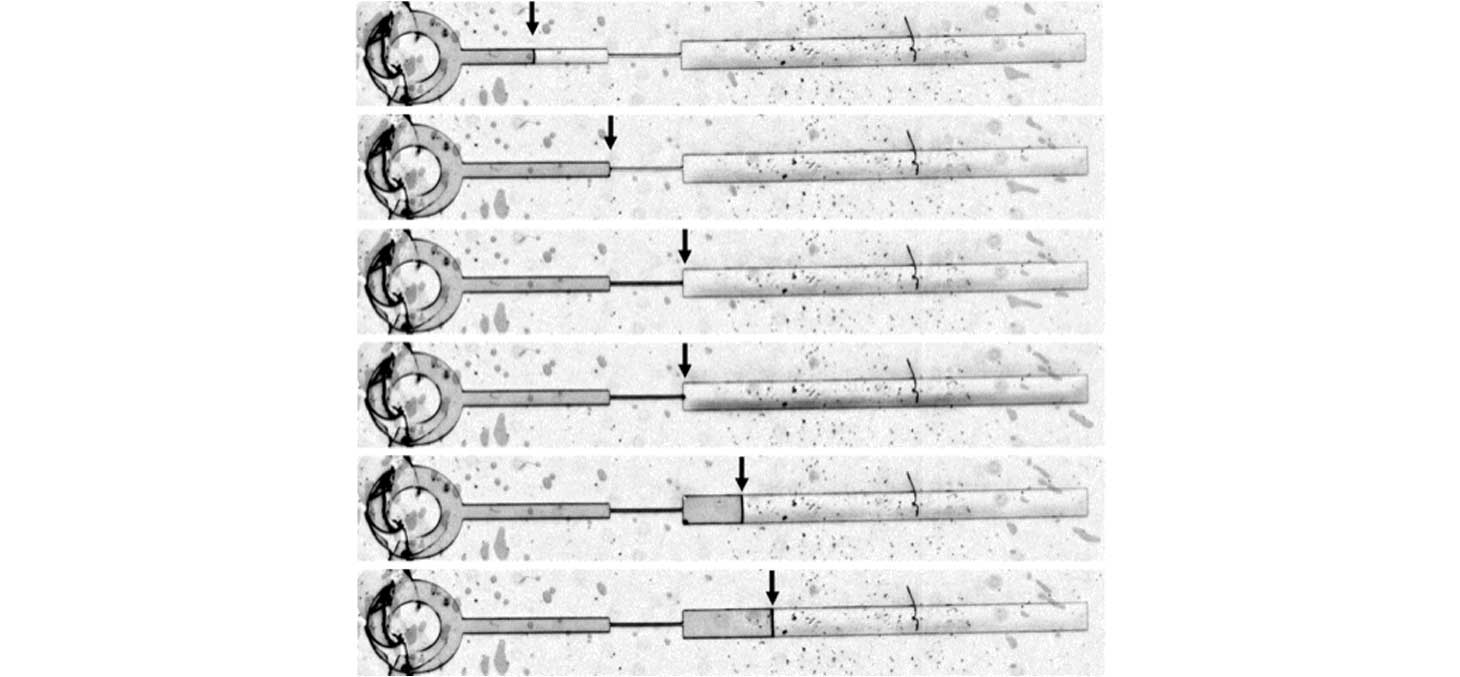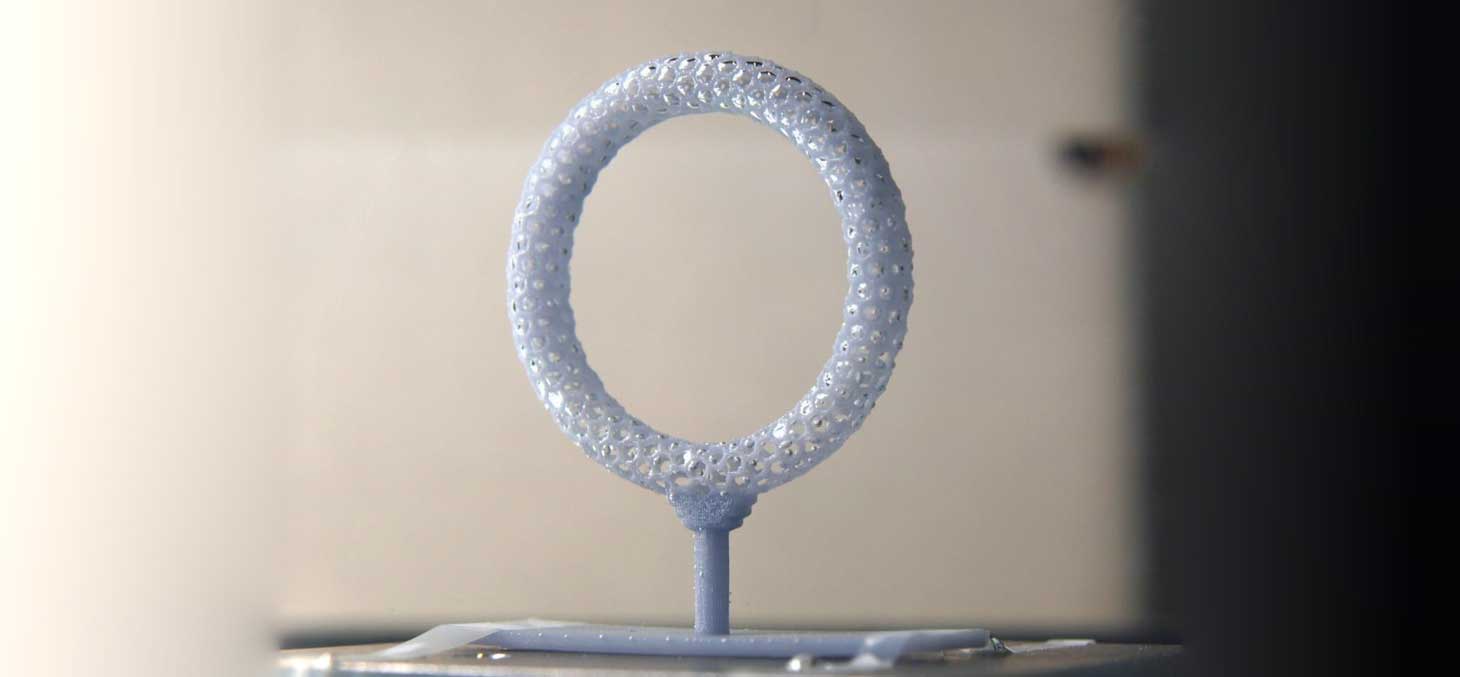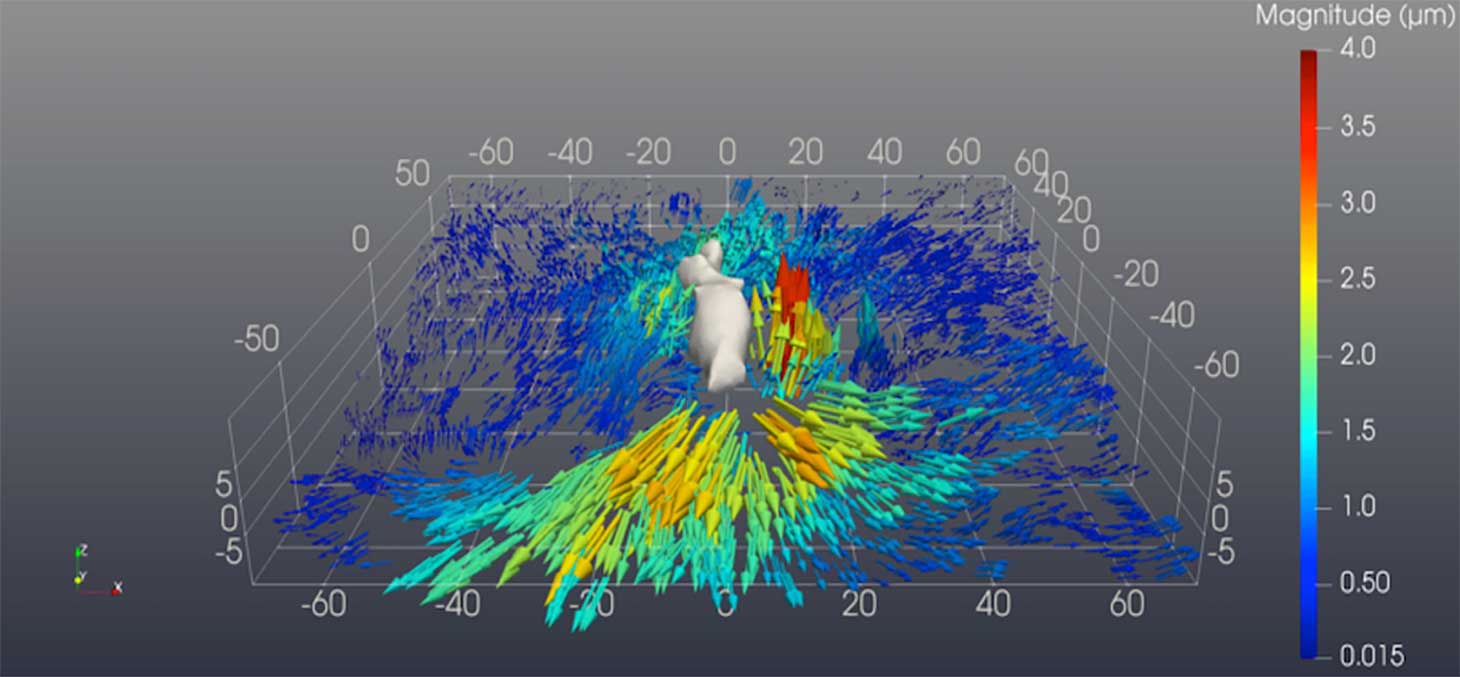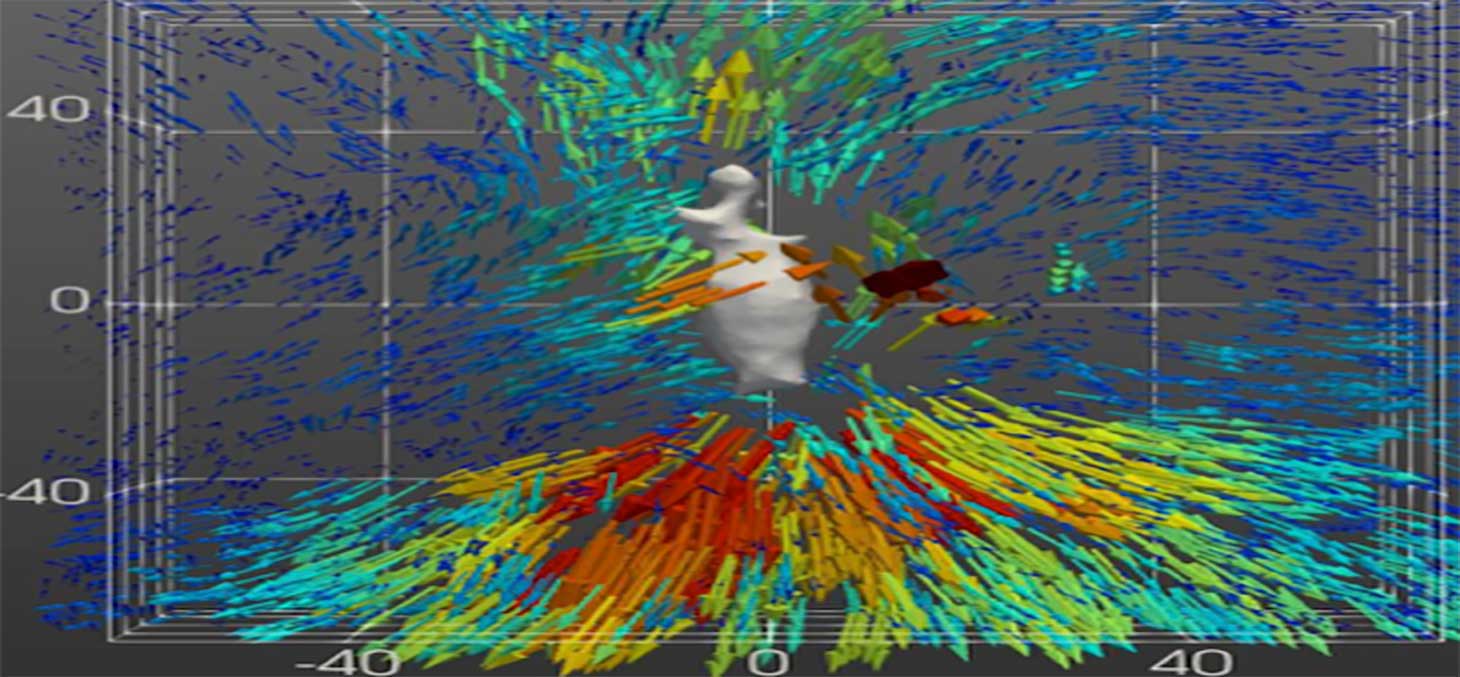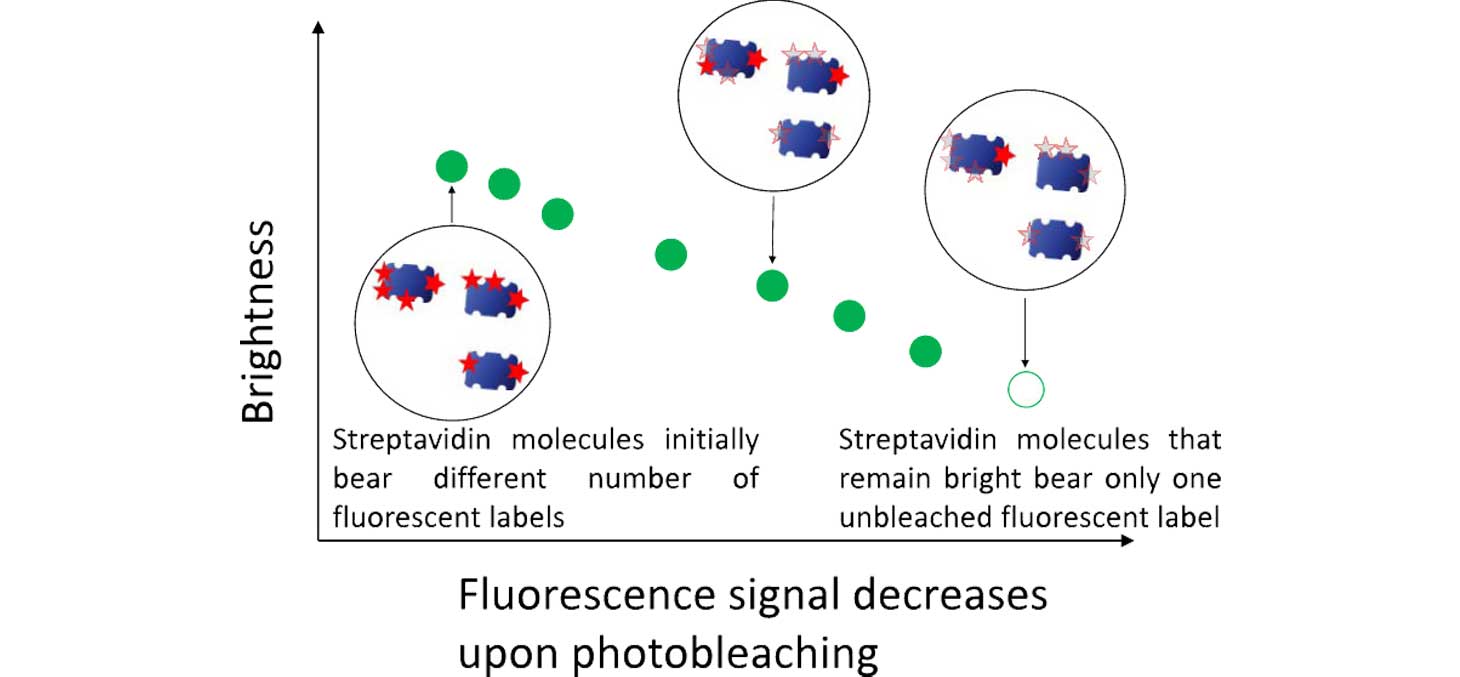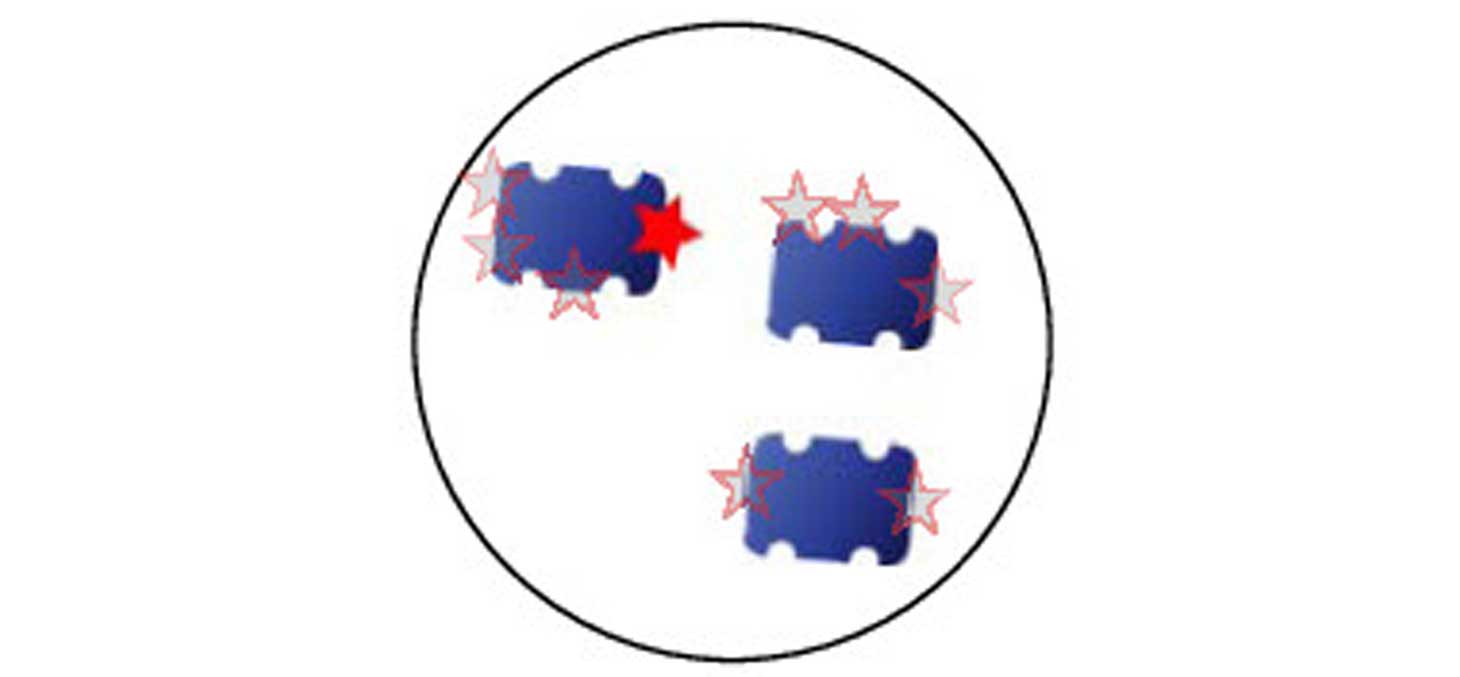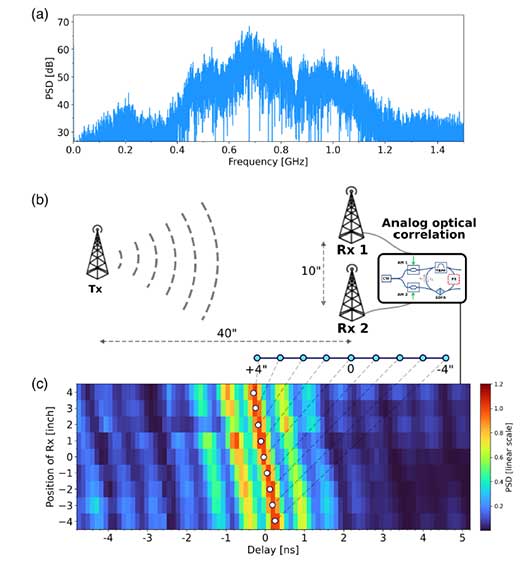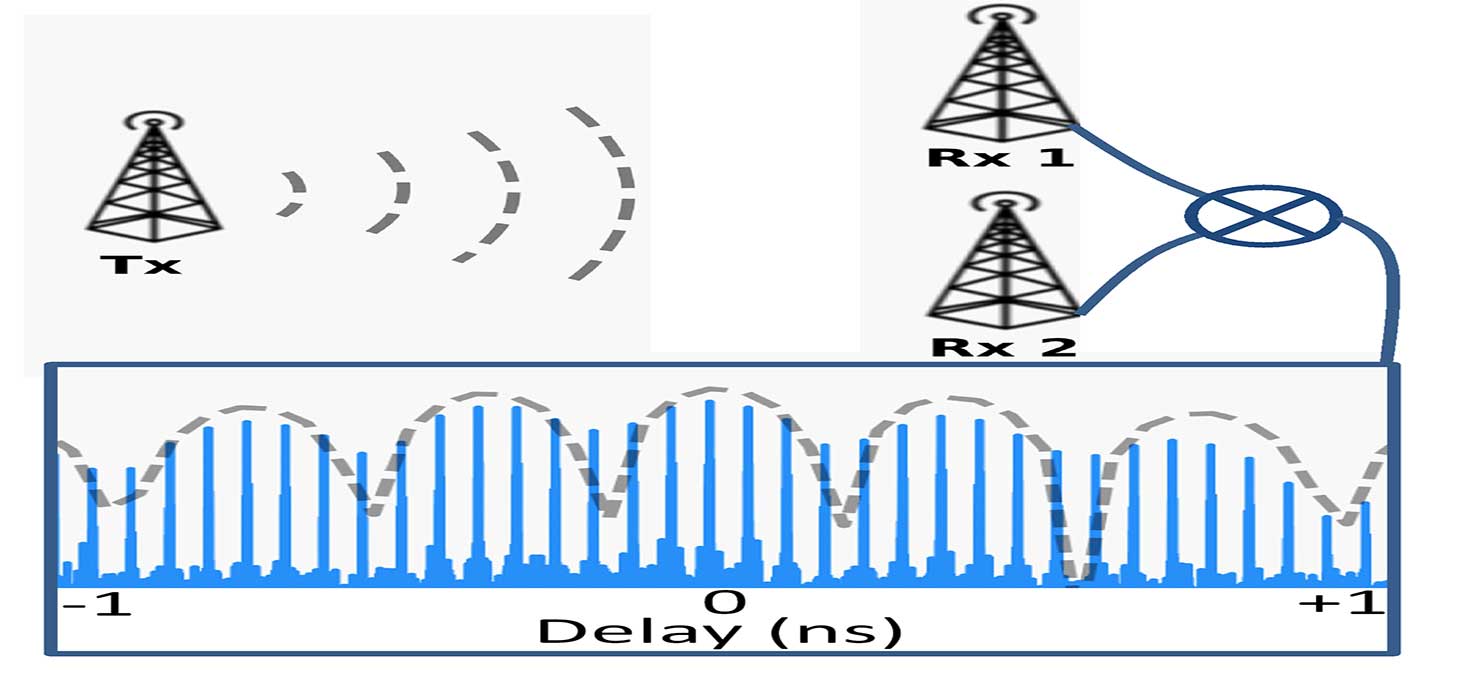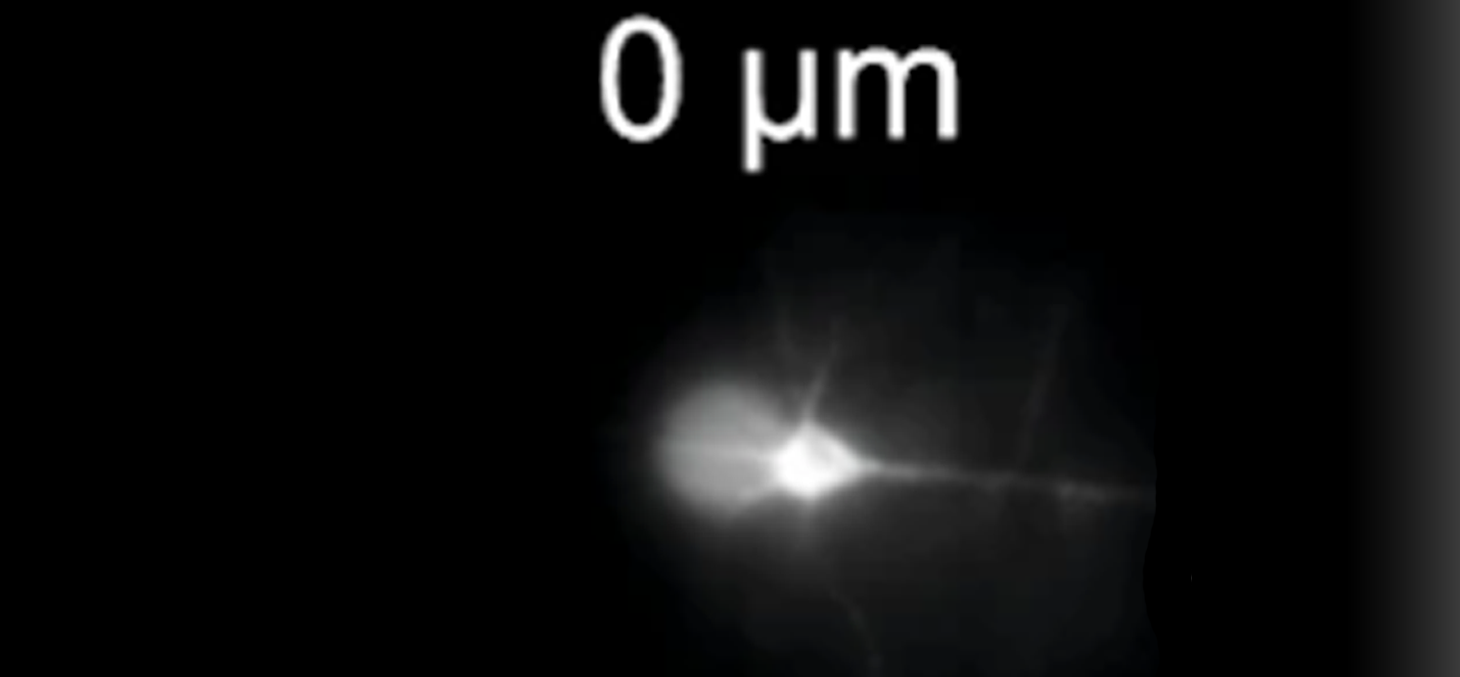Publication
On February 6, 2023
Researchers have shown that the deformability of red blood cells is an essential ingredient for their homogeneous diffusion in the terminal network of blood vessels, when the diameter of the vessels is only slightly larger than the size of the cells.
The proper circulation of red blood cells (RBCs in the following) in the body is an essential issue for the proper functioning of the human body, because in addition to their well-known function as vehicles for respiratory oxygen, they also transport numerous metabolites such as ATP, which are ultimately delivered to the organs via the terminal network of very small blood vessels (capillaries), whose diameter is barely larger than the size of the blood cells themselves.
The law of RBC transport in these microvessels remained poorly understood for decades. The classical picture that prevailed until today assumed that in each branch of the vascular network the blood flow did not depend on its previous path in the upstream blood vessels: thermal fluctuations, local flow disorders were assumed to make the trajectories random and the blood cells to choose at the intersections their direction at random.
In a study carried out at the Laboratoire Interdisciplinaire de Physique (LiPhy, CNRS / Université Grenoble Alpes), in collaboration with the Institut de Mécanique des Fluides de Toulouse (IMFT, CNRS / Toulouse INP / Université Toulouse - Paul Sabatier), and the Laboratoire ondes et Matière d'Aquitaine (LOMA, CNRS / Université de Bordeaux), researchers have proposed a model that clarifies, and even partially questions, this dogma. Indeed, when the flow concerns blood capillaries, they show that turbulence is no longer effective in making the transport of individual rigid particles chaotic, which are then advected by the flow in a very predictive manner, along the flow lines. When a particle comes to a crossroads, carried by the part of the flow that is destined to "turn left" for example, it will unsurprisingly do the same if its shape is sufficiently circular or spherical. The researchers note, however, that a sufficiently elongated and asymmetrical rigid shape is likely to give the particles a spirit of contradiction at each crossroads and make them take a different direction from that of the flow in which they are mostly immersed! This said, this opposition is systematic and in fact induces a much more predictable and therefore potentially dangerous trajectory if it is a question of carrying nutrients in a homogeneous manner in a network of capillaries. The lesser selectivity in the distribution of RBCs in the flow may in fact result downstream in inhomogeneities of distribution and induce biological stress in organs insufficiently supplied with RBCs.
To avoid this selectivity, which is essentially induced by the very small diameter of the capillaries (and probably also to avoid vascular occlusions linked to the dangerously comparable diameters of the capillaries and RBCs), the researchers show that evolutionary processes have produced an extremely clever response, by endowing the RBCs with a flexibility that forces them to deform when they arrive at intersections where the shear changes significantly. This deformation locally retroacts on the flow and induces a temporary chaoticity which finally makes the GR's choice of direction at the exit of the bifurcation random. From a more global point of view, the lateral exploration of the arteriolar network then becomes diffusive and ensures a statistically homogeneous visit of the network by an assembly of GRs distributed upstream in an identical way. In a complementary way, the researchers also show that when the concentration of RBCs is sufficiently high, interactions between RBCs induce enough dynamic perturbations at bifurcations to also generate normal diffusion, even in the presence of stiffer globules.
The scope of this work is not limited to RBCs, but is valid for any deformable particle, such as drops, capsules, and cells with nuclei (such as those of the immune system or cancer cells). This study could therefore help to better understand the transport properties of a wide range of systems, and guide, for example, the design of microfluidic circuits for lab-on-a-chip biotechnologies for cell diagnostics and sorting. These results are published in the journal Physical Review Letters.
(Reprinted from INP CNRS news of 6 February 2023)
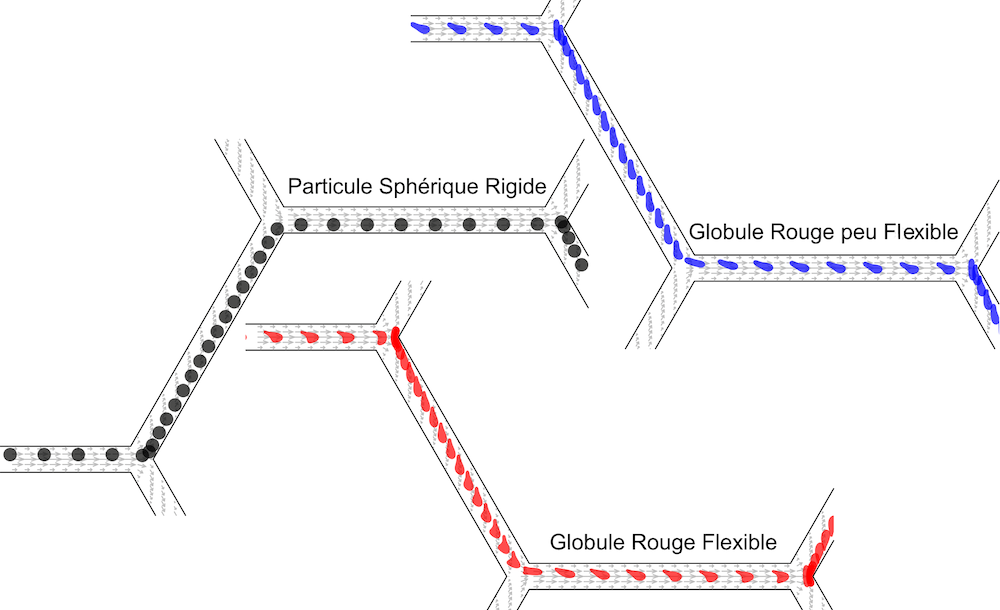 Trajectoires typiques des particules (de la gauche vers la droite). En noir, une particule sphérique rigide: initialement (tout à gauche) dans la partie supérieure du canal, elle impacte la première bifurcation légèrement au-dessus et continue donc dans l
Trajectoires typiques des particules (de la gauche vers la droite). En noir, une particule sphérique rigide: initialement (tout à gauche) dans la partie supérieure du canal, elle impacte la première bifurcation légèrement au-dessus et continue donc dans l
Contact
Chaouqi Misbah, Eccel Team
chaouqi.misbah univ-grenoble-alpes.fr (chaouqi[dot]misbah[at]univ-grenoble-alpes[dot]fr)
univ-grenoble-alpes.fr (chaouqi[dot]misbah[at]univ-grenoble-alpes[dot]fr)
Communication INP CNRS
inp.com cnrs.fr (inp[dot]com[at]cnrs[dot]fr)
cnrs.fr (inp[dot]com[at]cnrs[dot]fr)
Anomalous Diffusion of Deformable Particles in a Honeycomb Network
Z. Shen, F. Plouraboué, J. S. Lintuvuori, H. Zhang, M. Abbasi, C. Misbah, Physical Review Letters, paru le 03 janvier 2023.
DOI: 10.1103/PhysRevLett.130.014001
Archives ouvertes HAL
In the media
Simulated blood cells anomalously diffuse through microfluidic channels
Physics Today
Memory of Blood Cells
Physics 16, s4
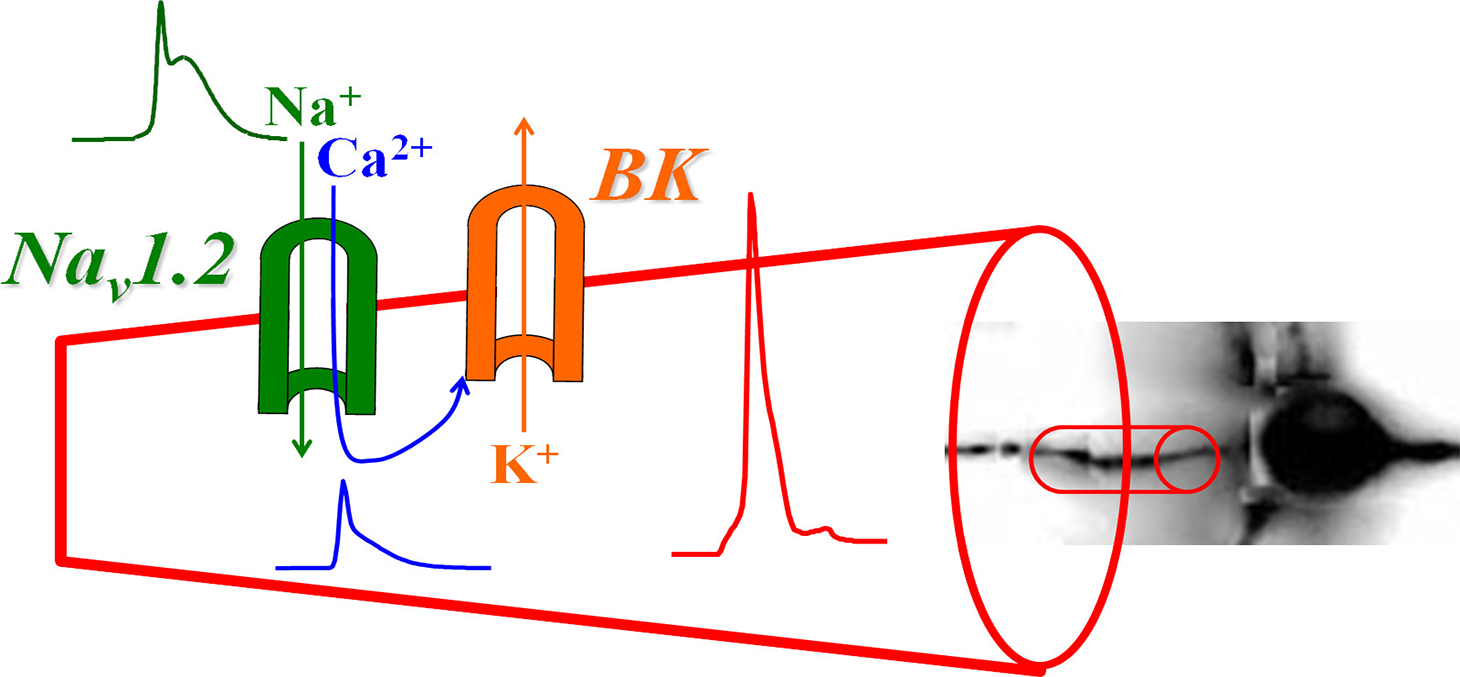
 univ-grenoble-alpes.fr (marco[dot]canepari[at]univ-grenoble-alpes[dot]fr)
univ-grenoble-alpes.fr (marco[dot]canepari[at]univ-grenoble-alpes[dot]fr) univ-grenoble-alpes.fr (laila[dot]blomer[at]univ-grenoble-alpes[dot]fr)
univ-grenoble-alpes.fr (laila[dot]blomer[at]univ-grenoble-alpes[dot]fr)